
HomePony Know HowRiding TipsJumpingSuper-strong ponies sorted
-
Pony Care Tips
Learn everything you need to know about caring for your fave pony. From feeding and grooming to mucking out – we have it all here!
-
Riding Tips
Improve your riding with our fab articles! Whether it's building your confidence, riding shapes, or jumping spreads that you need tips on, we have something for every rider.
Latest News
Super-strong ponies sorted
Posted in Jumping
Does your pony get too strong and rush when it comes to jumping? Here’s how to solve it
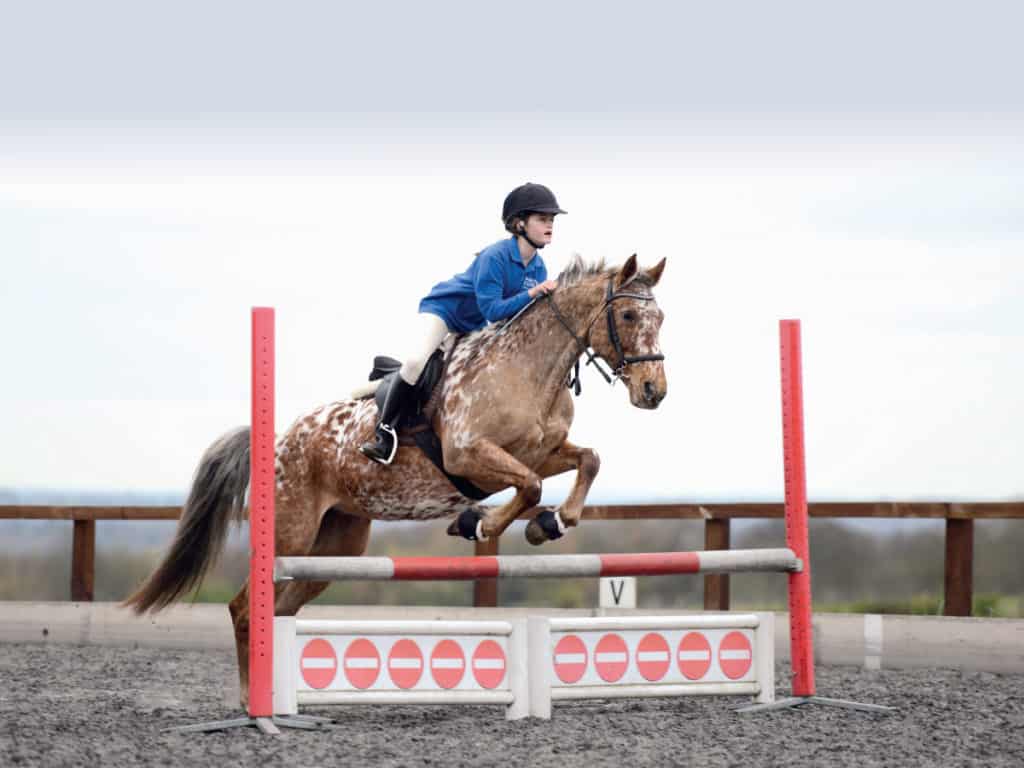
Lots of ponies get super-excited when they’re jumping and this often means they become stronger to ride. If your fave pony does this, you might find it difficult to keep him balanced and listening to your aids, while he’s thinking he knows better and dashing towards every fence he sees!
For ponies who are strong, it’s especially important to think about your position, and how this can affect his speed and way of going. Plus, there are several exercises you can use during your schooling sessions to encourage him to stay focused on you.
Did you know? As well as not being fun, riding a strong pony affects your chances of a clear round. If he’s not listening, you won’t be able to get your approach to each fence spot on and you’ll be more likely to have a pole down or a run-out.
Position perfect
The way you sit on your pony really affects how he responds to your aids. It’s easy to let yourself get pulled forward when you’re riding a strong pony, so follow these tips to stay strong and secure in the saddle…

- look up! Keeping your eyes and head up, especially on the approach and landing of a fence, helps keep you in a safe position
- keep your shoulders back The more you think about pulling your shoulders back, the less likely you’ll find yourself tipped forward in the saddle. Think of your elbows as shock absorbers – keep them soft, bent and close to your body to stop your pony being in charge of your position
- soften your hands Avoid pulling hard on the reins, as your pony will try to pull back. Give and take with your hands to encourage him to stay soft, and use half-halts to ask him to wait
- push your heels down Keeping your weight into your heels makes your legs secure and brings them underneath you
Exercise 1: Trotting poles
Polework is a great tool for encouraging rhythm and balance in your pony’s paces, which can be used when it comes to jumping, too. He has to concentrate on where his legs are as you ride over the poles, so it’s much easier to keep him focused and stop him rushing.

Set it up… Lay out four poles on the ground in a straight line, each approximately 1.10m apart for a 14.2hh pony.
How to ride it…
1. Trot over the poles a couple of times on each rein, making sure your pony’s comfortable with the distances.
2. Turn the last pole into a small cross-pole, then approach again.
3. Keep your legs wrapped around your pony’s sides and your hands soft to encourage him over the fence, then ride away in a straight line.
Top tip – you can do these exercises over several schooling sessions – practise them little and often whenever you need a refresher.
Exercise 2: Halt transitions
Riding plenty of transitions encourages a strong pony to listen to you and respond to your aids. You should use them as part of your regular warm-up, but halt transitions are especially useful when it comes to jumping.

Top tip – use your whole body to ask your pony to halt. Roll your shoulders back and sit up tall in the saddle. Keep your legs around his sides, and squeeze and release with your hands to ask him to halt. Imagine you’re pushing him into the transition instead of pulling him.
Set it up…
Build one small fence in your arena.
How to ride it…
1. First, check your brakes by riding some trot to halt transitions around the edge of the arena. Keep your legs around your pony’s sides as you halt and imagine the reins are like sponges as you squeeze them to ask for halt.
2. Now, approach the fence in a balanced trot, using half-halts to steady your pony if he tries to rush into it.
3. Keep your pony straight on landing and, whether he lands in trot or canter, ask him to halt several strides away from the fence. Remember to sit up tall in the saddle to prevent him pulling you forward.
4. As you become confident with the exercise, aim to shorten the distance it takes you to halt after the fence. Try to avoid letting your pony run through the transition by being firm with your aids.
Top tip – it’s best not to use this exercise when you’re jumping a course, as halting in front of other fences could encourage him to refuse.
Exercise 3: Jumping on a circle
When your pony’s on a circle, he has to concentrate more so he can stay balanced. Therefore, for a pony who rushes and is strong, jumping on a circle is a useful exercise to divert his attention and keep him focused.
Set it up… To begin with, place one pole on the ground with enough space for you to ride a 15m circle over it.
How to ride it…
1. Start in walk or trot to let your pony understand the question you’re asking him and for you to practise riding an accurate line over the pole.
2. Move on to cantering over the pole – remember to ride over it a couple of times on each rein.
3. When you’re happy with that, turn the pole into a small fence and repeat the exercise.
4. As you jump the fence, think about looking around the corner and staying on your 15m circle.
5. When you’re both finding that easy, you can add another fence on the other side of the circle. You’ll need to make sure you’re really balanced and steady to make it over both of them!
Top tip – your pony’s likely to find this exercise tiring, so don’t keep jumping the fences over and over again – a few times on each rein is enough.
Put it into practice!
These exercises are a great way to fine-tune your technique and get your pony listening to you, and you can come back to them whenever you feel you need to work on it again.
The next step is to put everything you’ve learnt into practice when jumping a whole course, especially at a competition, and you’re bound to see an improvement!


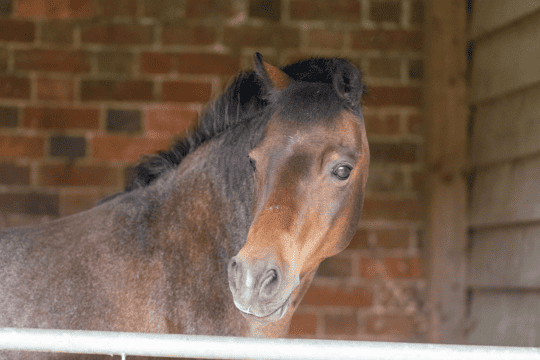
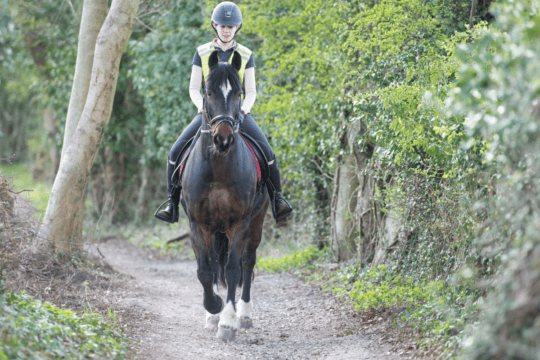
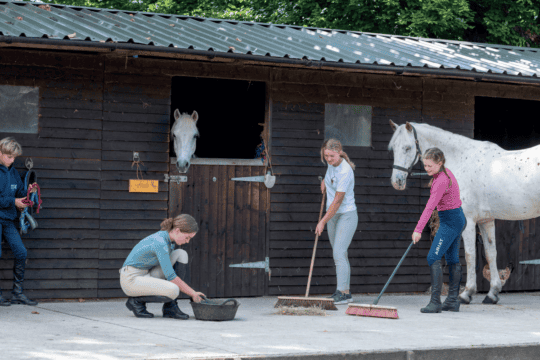
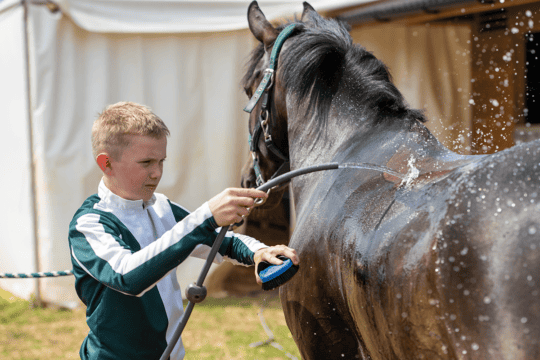
















Leave a Reply
You must be logged in to post a comment.